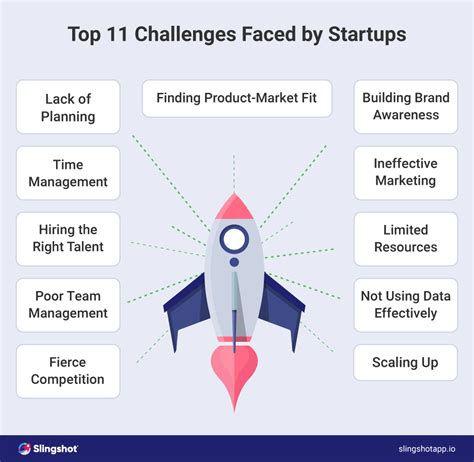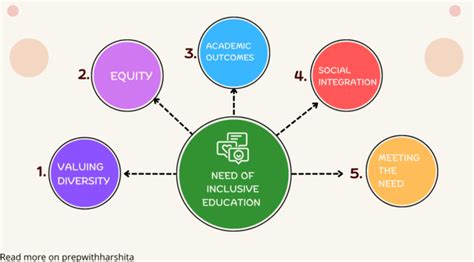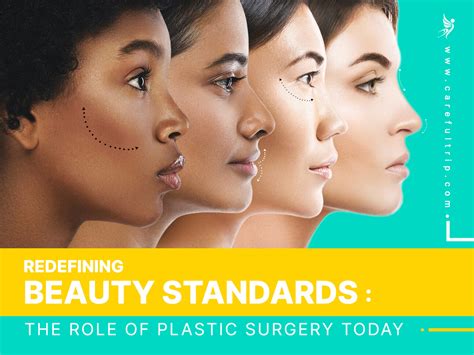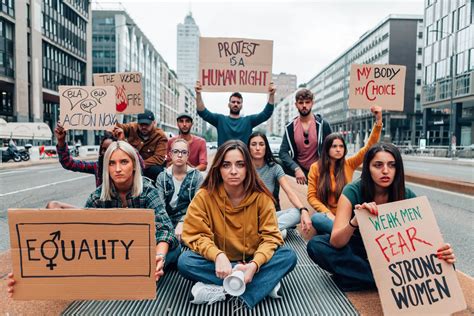Imagine a world where possibilities know no barriers and limitations are mere figments of imagination.
In this realm, people with different abilities flourish, unhindered by societal shackles and predetermined expectations. With unwavering determination, individuals navigate the pathways of their dreams, propelled by inner strength and resilience.
Elevating diverse abilities becomes a collective responsibility, essential for unlocking the full potential of every individual.
Embracing this vision requires redefining what it means to be disabled, shifting the narrative from a focus on limitations to an emphasis on abilities. It entails breaking free from the limitations imposed by traditional perceptions, nurturing an inclusive paradigm that fosters empowerment, and cultivating an environment where dreams can blossom.
Overcoming Obstacles with Innovative Technology

In this section, we will explore how cutting-edge technology is revolutionizing the lives of individuals facing physical challenges. By harnessing the power of innovation, breakthroughs are being made to break down barriers and provide new opportunities for those living with disabilities.
1. Augmented Reality (AR) and Virtual Reality (VR)
- AR and VR technologies are enabling individuals to experience virtual worlds, enhancing their abilities to learn, explore, and interact with their surroundings.
- Through the use of specialized devices, AR and VR provide an immersive experience, offering a sense of empowerment and freedom to individuals who may have limited physical mobility.
- These technologies can also simulate real-life scenarios, such as job interviews or social situations, helping individuals with disabilities gain confidence and practice important skills.
2. Assistive Robotics
- Advancements in robotics are creating new possibilities for people with disabilities to regain independence and perform everyday tasks.
- Robotic exoskeletons, for example, can provide support and assistance to individuals with impaired mobility, allowing them to walk or engage in physical activities that were previously difficult or impossible.
- Other forms of assistive robots, such as robotic arms or hands, can assist with tasks like eating, writing, and operating electronic devices.
3. Smart Devices and Accessibility Apps
- Smartphones, tablets, and wearable devices offer a wide range of accessibility features and apps that empower individuals with disabilities in their daily lives.
- Text-to-speech and speech recognition technologies enable individuals with visual impairments or motor disabilities to effectively communicate and access information.
- Specialized apps cater to specific needs, such as assistive communication apps for individuals with speech impairments or apps that assist with navigation for individuals with mobility challenges.
4. Brain-Computer Interfaces
- Brain-computer interfaces establish a direct connection between the brain and external devices, bypassing traditional pathways.
- These interfaces enable individuals with severe disabilities, such as paralysis, to control various devices through their brain activity, offering newfound independence and functionality.
- Advancements in this field hold the potential to transform the lives of individuals with complete paralysis, allowing them to perform tasks and interact with the world in ways previously unimaginable.
By embracing innovative technologies, societies can break down the barriers faced by individuals with disabilities, opening up a world of possibilities and empowering them to live their lives to the fullest. Through continued advancements, the future holds even greater potential for inclusivity and equal opportunities for all.
Creating inclusive communities
In this section, we will explore the concept of fostering environments that embrace diversity and promote equal opportunities for all individuals, regardless of their abilities. We will delve into the importance of building inclusive communities that celebrate the unique strengths and contributions of every person, seeking to break down barriers and create a more accessible and welcoming society.
Fostering diversity: By embracing diversity and recognizing the value of individual differences, we can create communities that are enriched by a wide range of perspectives, talents, and experiences. Inclusion goes beyond mere tolerance; it involves actively promoting an environment where every member feels valued and respected, regardless of their abilities.
Promoting equal opportunities: Inclusive communities aim to provide equal opportunities for everyone, ensuring that individuals with disabilities have the same chances to participate in social, educational, and professional activities. By eliminating barriers and actively addressing accessibility challenges, we can empower individuals with disabilities to fully engage in their communities and pursue their dreams.
Breaking down barriers: Inclusive communities strive to dismantle physical, social, and attitudinal barriers that prevent individuals with disabilities from fully participating in society. This can involve making physical spaces more accessible, promoting awareness and understanding, and challenging societal norms and stereotypes that perpetuate exclusion.
Celebrating contributions and strengths: In building inclusive communities, it is crucial to recognize and appreciate the unique strengths and contributions that individuals with disabilities bring. By highlighting their abilities rather than focusing on their limitations, we can create a culture of acceptance and appreciation, fostering an environment where everyone can thrive.
Creating a welcoming society: The ultimate goal of creating inclusive communities is to build a society where everyone feels welcome and included. By promoting empathy, understanding, and acceptance, we can create a sense of belonging for individuals with disabilities, empowering them to pursue their goals and dreams without limitations.
In conclusion, creating inclusive communities is a vital step towards empowering individuals with disabilities and ensuring they have equal opportunities to thrive. By fostering diversity, promoting equal opportunities, breaking down barriers, celebrating contributions and strengths, and creating a welcoming society, we can create a world where everyone can dream and achieve beyond limitations.
The Significance of Inclusive Education

Education is a powerful tool that holds the potential to transform lives and break down barriers. In the realm of empowering individuals with diverse abilities, accessible education plays a pivotal role in shaping a more inclusive society. It is through inclusive education that we enable individuals, regardless of their unique circumstances, to unlock their full potential and contribute meaningfully to their communities.
Empowering individuals through accessible education goes beyond the provision of academic knowledge. It fosters an environment of acceptance, understanding, and equality, where individuals with disabilities are recognized for their inherent worth and talents. By providing equal educational opportunities, society can empower individuals with disabilities to dream, explore their passions, and achieve their goals, enabling them to surpass societal presumptions or limitations that may have previously hindered their progress.
Inclusive education acknowledges that every individual deserves an education that caters to their unique abilities and learning styles. By implementing inclusive practices, such as adapted curricula, assistive technologies, and supportive learning environments, educational institutions can create a framework that ensures all individuals can access quality education and thrive, regardless of their disabilities. Inclusive education not only benefits individuals with disabilities but also enriches the educational experiences of their peers, fostering empathy, respect, and diversity among students.
Moreover, accessible education plays a crucial role in society's progress as a whole. By empowering individuals with disabilities through education, we equip them with the knowledge, skills, and confidence they need to actively participate in various domains of life, including the workforce, academia, and community engagement. In doing so, we tap into a vast pool of talent and potential that was previously overlooked, leading to a more equitable and prosperous society.
Ultimately, the power of accessible education lies in its ability to challenge societal norms and reshape perceptions. It is through inclusive educational practices that we can create a world where individuals with disabilities are seen, heard, and valued for their unique contributions, enabling them to dream, exceed expectations, and truly thrive beyond any preconceived limitations.
Championing differently-abled athletes on a global platform
Advocating for equal opportunities, inclusivity, and recognition, this section sheds light on the remarkable accomplishments and contributions of athletes with unique abilities. Celebrating the remarkable journeys and triumphs of these athletes, this section showcases the spirit, resilience, and determination that defies societal barriers and inspires change.
- Highlighting the immense talent and skill displayed by differently-abled athletes.
- Showcasing the global stage where these athletes compete, breaking stereotypes and challenging preconceived notions.
- Exploring the impact of increased representation and media coverage on differently-abled athletes.
- Discussing the importance of adaptive and supportive sports equipment and technologies in enhancing the abilities of disabled athletes.
- Examining the role of sports organizations, governments, and society in creating an enabling environment for athletes with unique abilities.
- Sharing inspiring stories of triumph over adversity and the pursuit of excellence against all odds.
- Exploring the para-sports movement and its impact on changing perceptions and attitudes towards disability.
- Highlighting the significance of inclusive sporting events and tournaments that unite athletes from diverse backgrounds.
- Discussing the long-lasting impact of disabled athletes as role models and advocates for inclusion and diversity.
Through showcasing the achievements of differently-abled athletes on a global stage, this section aims to inspire others, challenge stereotypes, and foster a more inclusive society that recognizes and celebrates the unique abilities of all individuals.
Redefining beauty standards

Exploring new dimensions of attractiveness and challenging traditional norms, this section delves into the concept of redefining beauty standards. It aims to shed light on the power of perception and how it influences society's perception of beauty, going beyond the bounds of conventional definitions. In this section, we delve into the profound impact of embracing diversity and inclusivity, recognizing the beauty in uniqueness, and embracing both visible and invisible disabilities as part of the broader spectrum of human beauty.
Supporting mental well-being for individuals with disabilities
Maintaining good mental health is crucial for individuals with disabilities, as it contributes to their overall well-being and quality of life. This section explores the importance of providing appropriate support and resources to empower individuals with disabilities in managing and improving their mental health.
- Understanding unique challenges: It is essential to recognize that individuals with disabilities may face specific challenges and obstacles that can impact their mental health. These challenges may include societal stigma, limited access to resources, and feelings of isolation or loneliness.
- Promoting inclusivity and support networks: Creating an inclusive environment and fostering support networks can significantly enhance mental well-being. Connecting individuals with disabilities to peer support groups, counseling services, and community activities can help reduce feelings of isolation and improve their overall mental health.
- Encouraging self-expression and self-advocacy: Empowering individuals with disabilities to express their thoughts, feelings, and ideas is vital for their mental well-being. Encouraging self-advocacy and providing platforms for self-expression can help enhance self-esteem and promote positive mental health outcomes.
- Providing accessible mental health services: Accessible mental health services that cater to the unique needs of individuals with disabilities are essential. Ensuring the availability of assistive technologies, adapted therapeutic approaches, and trained professionals who understand the specific challenges of disabilities can contribute to effective mental health support.
- Addressing societal stereotypes and promoting awareness: Challenging societal stereotypes and promoting awareness about the mental health needs of individuals with disabilities are key in supporting their well-being. By educating the public and fostering a more inclusive society, we can create a supportive environment that empowers individuals with disabilities to thrive mentally and emotionally.
Supporting the mental health of individuals with disabilities requires a holistic approach that addresses their unique challenges and provides inclusive and accessible support. By prioritizing mental well-being and fostering a supportive environment, we can empower individuals with disabilities to lead fulfilling lives and overcome any barriers they may face.
Advocating for equal rights and opportunities

Ensuring that individuals with disabilities have the same rights and opportunities as the rest of society is essential for creating an inclusive and equitable community. This section will explore the importance of advocacy in promoting equal rights and opportunities for people with diverse abilities.
Advocacy plays a crucial role in raising awareness about the challenges faced by individuals with disabilities and advocating for their rights and inclusion. By advocating for equal opportunities, society can work towards dismantling barriers and stereotypes that limit the potential of people with diverse abilities.
| Accessible Environment | Advocacy efforts focus on creating an accessible environment that caters to the needs of individuals with disabilities. This includes ensuring physical accessibility in buildings and public spaces, as well as digital accessibility in technology and online platforms. |
| Inclusive Education | Advocates strive to promote inclusive education systems that value and support the learning needs of students with disabilities. This involves advocating for inclusive policies, curriculum modifications, and the availability of appropriate assistive technologies in classrooms. |
| Employment Opportunities | Advocacy campaigns aim to secure equal employment opportunities for individuals with disabilities. This involves challenging discriminatory practices, promoting inclusive hiring policies, and raising awareness about the unique skills and perspectives that people with disabilities can bring to the workforce. |
| Independent Living | Advocates work towards enabling individuals with disabilities to live independently and have control over their lives. This includes advocating for accessible housing, transportation options, and supportive services that facilitate independent living. |
| Social Inclusion | Advocacy efforts seek to foster social inclusion by combating stigma and promoting acceptance of individuals with disabilities in all aspects of society. This involves advocating for accessible recreational activities, cultural events, and community programs that embrace diversity and promote equal participation. |
Advocating for equal rights and opportunities is not only about creating a more inclusive society but also recognizing the valuable contributions and talents of individuals with disabilities. It requires collective action and a commitment to challenging and changing societal norms and systems that perpetuate inequality.
By advocating for equal rights and opportunities, we can empower individuals with disabilities to dream without limitations and create a world where everyone has the chance to reach their full potential.
FAQ
What is the main focus of the article "Dreaming beyond limitations: Empowering the disabled"?
The main focus of the article "Dreaming beyond limitations: Empowering the disabled" is to highlight how individuals with disabilities can overcome challenges and achieve their dreams by being empowered. It explores different ways in which disabled individuals can be empowered and showcases inspiring stories of those who have defied limitations.
What are some examples of empowerment mentioned in the article?
The article mentions various examples of empowerment for individuals with disabilities. It discusses the importance of inclusive education, where disabled students are provided with necessary accommodations and support to excel academically. It also mentions the significance of accessible infrastructure and technology, which enables disabled individuals to participate fully in society. Additionally, the article highlights the importance of promoting a positive mindset and self-advocacy among the disabled community.
Are there any success stories shared in the article?
Yes, the article shares several success stories of disabled individuals who have achieved remarkable accomplishments. One such story is that of Sarah Johnson, a wheelchair user who became a Paralympic gold medalist in swimming. Another inspiring story is that of Mark Davis, a blind entrepreneur who established his own successful business. These stories serve as examples of how determination, support, and empowerment can help disabled individuals overcome challenges and excel in their chosen fields.
How can society contribute to empowering the disabled?
The article suggests several ways in which society can contribute to empowering the disabled. First, it emphasizes the need for creating inclusive and accessible environments, such as buildings, public spaces, and transportation. This includes implementing necessary accommodations and ensuring equal opportunities for all. Second, society can support educational institutions in providing inclusive education to disabled students. Furthermore, promoting awareness and understanding about disabilities, as well as eradicating stigma and discrimination, are vital steps toward empowering the disabled.



